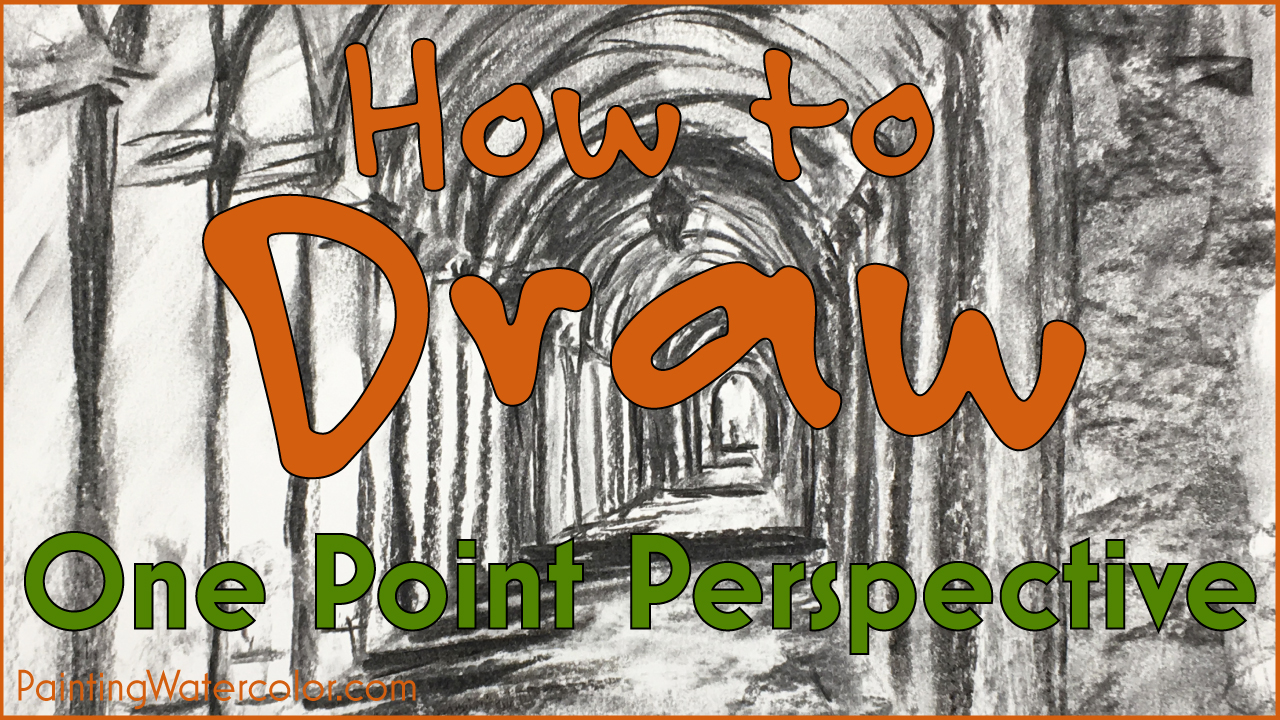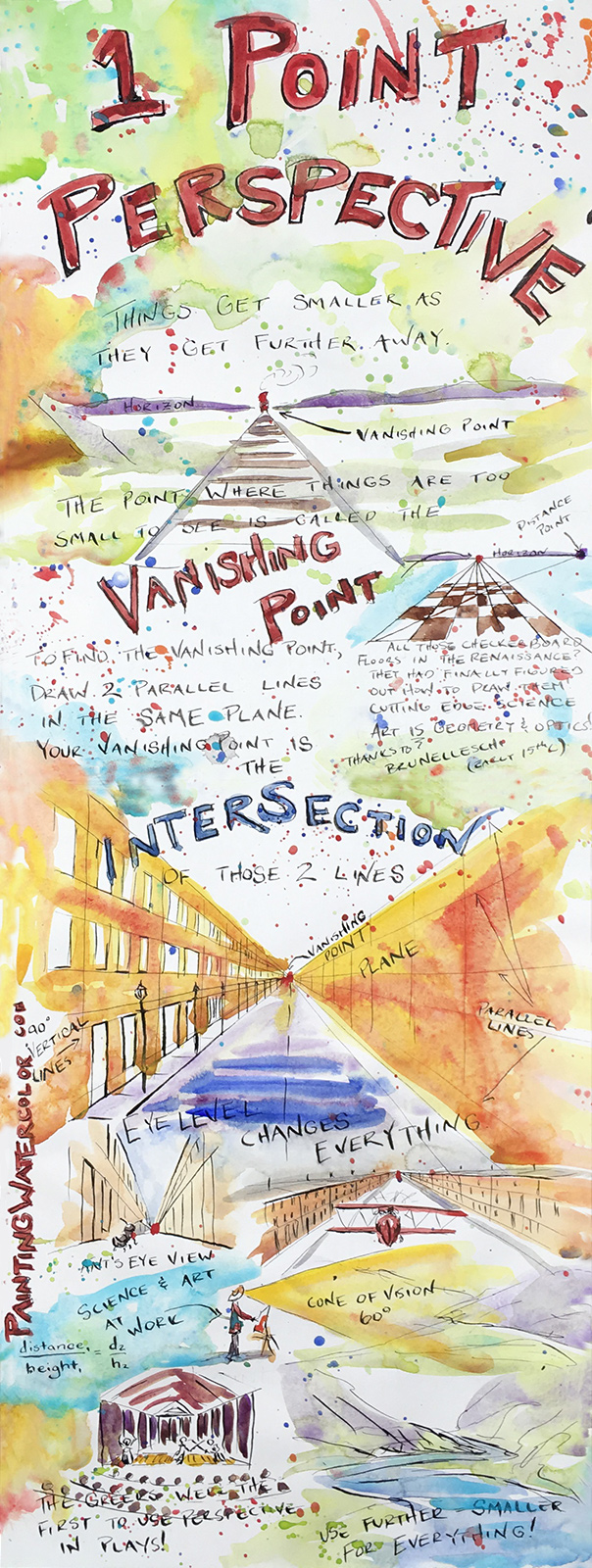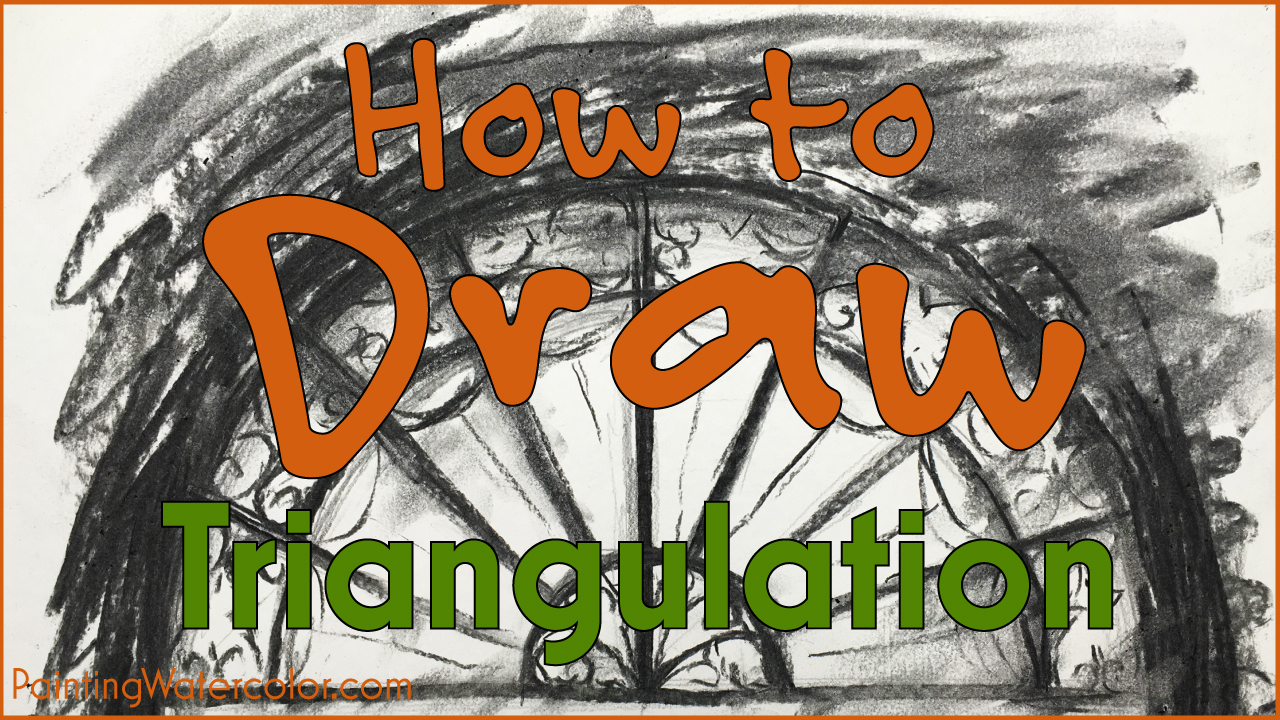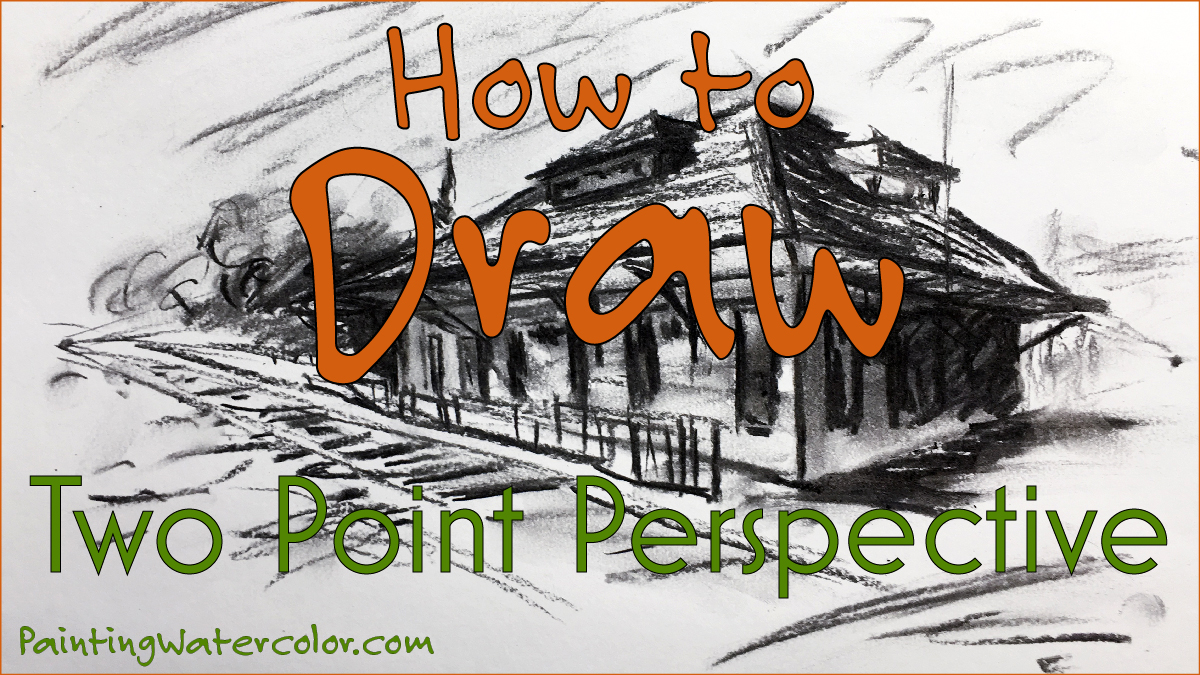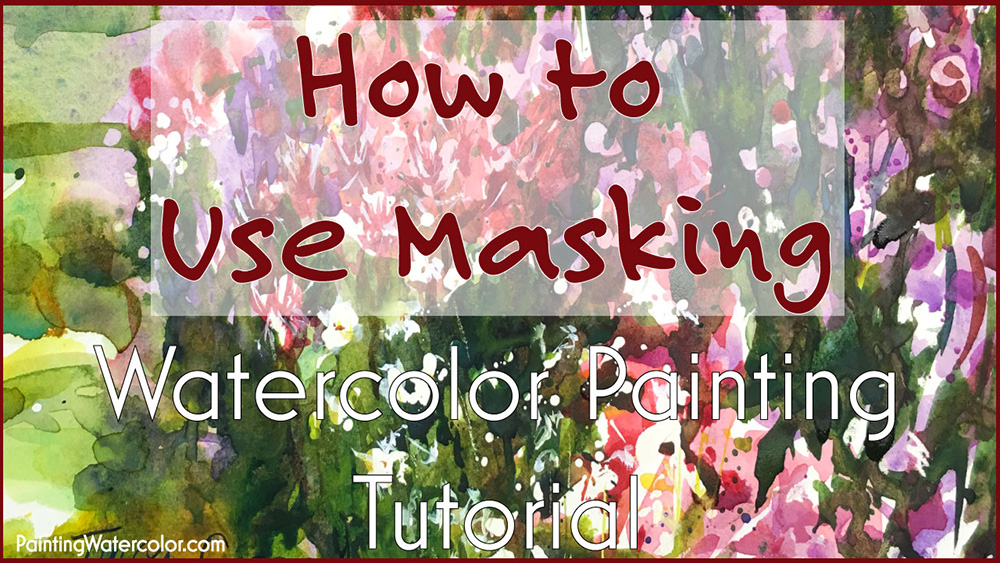Disclaimer: Jennifer Branch Gallery is a participant in the Amazon Services LLC Associates Program, an affiliate advertising program designed to provide a means for sites to earn advertising fees by advertising and linking to amazon.com. I receive a small rebate for your entire order (starting at 4%) if you choose to purchase through Amazon. Most items can be bought multiple places and I highly recommend local art stores if you have one! Any other recommendation links I receive no compensation for.
These referrals help me support this website, and I thank you for any purchase you make through them. I will never recommend a product I have not used frequently and believe is the best tool for the purpose!

The covered archway path leading to the Basilica di S. Maria di Monte Berico, Vicenza is an ideal example of 1 point perspective.
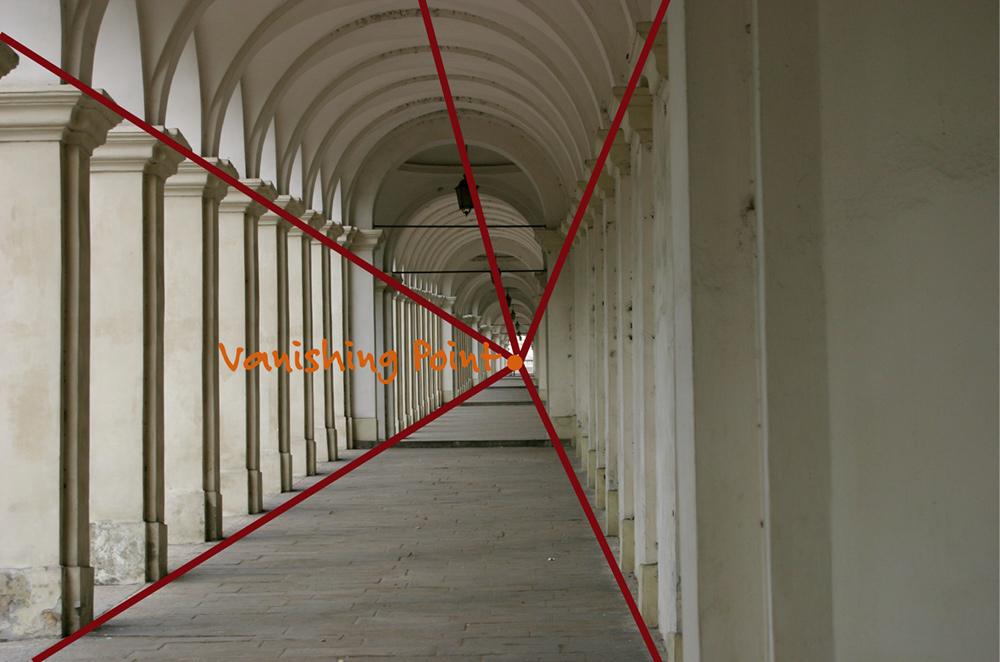
The stairway is slightly staggered, so the lines aren't straight but staggered with the long stair path. Just draw the lines to the vanishing paint and shift them slightly with each level.
1. This is a very simple drawing but they are a few tricks to notice. The columns do not line up with each other, but are staggered to work with the vaulted arches overhead.
2. The vanishing point is at my horizon at the end of the tunnel. However the stairway curves and steps down to get there.
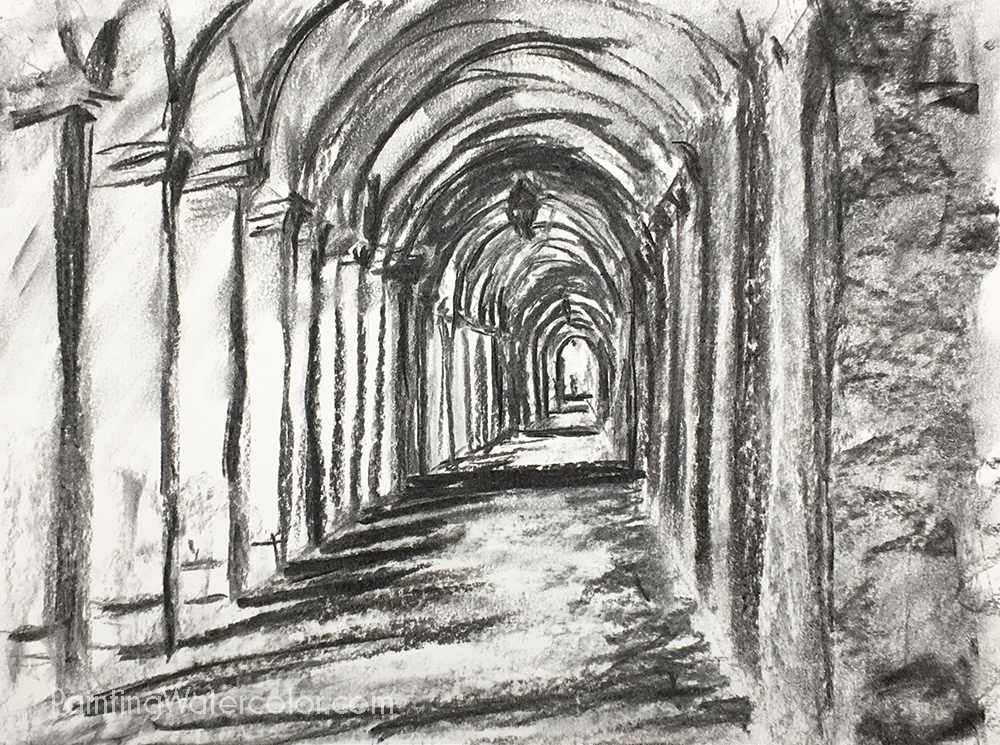
A value study for the Mont Berico path.
I can't wait to paint this!
This is a very simple value study, dark surrounding a light focus. One point perspective is very suited to simplicity!
If you paint this, notice the lovely light streaming in at an angle - which I exaggerated to point your eye where I want it to go. Also, the glints of bright light against deep shadow in the middle are lovely.
Whenever I can't see a painting clearly in my head (and sometimes when I can), I always start with a value study. Next, I usually do at least 1 sketch. When my brush hits the paper I want to know exactly what my goal is - that way I can let the color flow without fussing about little things.
Yes, I'll be painting this on YouTube soon!

The Viottolone at the Boboli Gardens in Florence, Italy, is a good example of one point perspective.
Your perspective horizon is not always the horizon where the sky meets the earth. Sometimes, in hilly areas, your perspective horizon can be at the bottom of the hill.
In this example, just like most real life examples that aren't railway tracks in a plain, there are slight jags in the beautifully straight lines. The bushes break up the line where the path goes out. And even the Italians can't make trees perfectly even 365 days of the year. So the objects follow the proportions your guide lines show, but may shift slightly one way or the other. Use triangulation to get these shifts right.
Perspective is really about proportions. The proportion of distance to height is always the same throughout a single plane. When plans meet, the proportion is also the same.
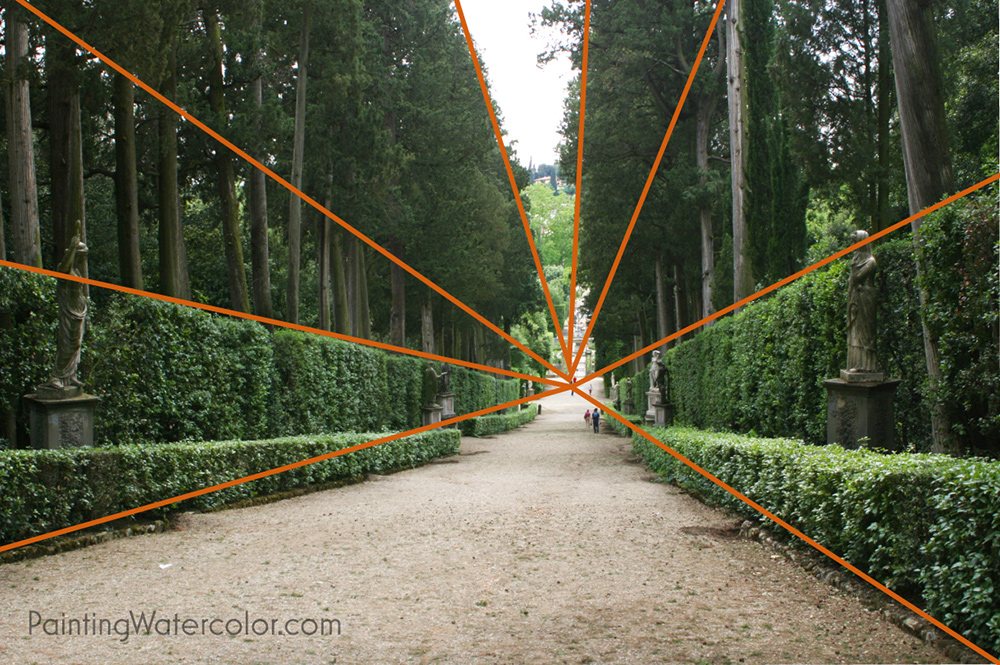
All lines lead to the horizon - at the bottom of the hill.
1. Find your horizon by drawing 2 of your parallel lines appearing in a single plane.
2. The horizon of that plane is where those lines meet.
In a formal garden, which really is a sort of architecture, you'll have several planes at right angles to each other, just like a city street lined with buildings.
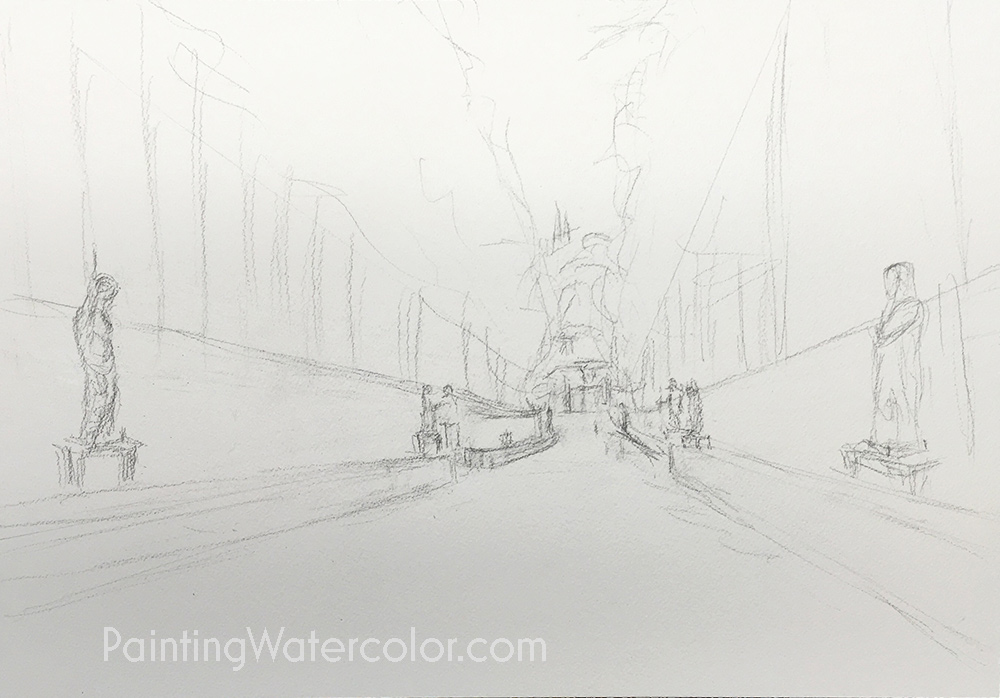
The drawing for my Boboli Gardens painting.
On watercolor paper, always use a light 2B pencil, never charcoal. Charcoal would ruin the painting.
Also, the actual drawing is lighter than this. I exaggerated the contrast so you could see the pencil clearly!
I can't wait to paint this!
Once again, one point perspective makes a very simple painting. Many one point perspective paintings pull you into the painting. There's a path your eye absolutely has to follow and every line in the painting leads down that path.
For
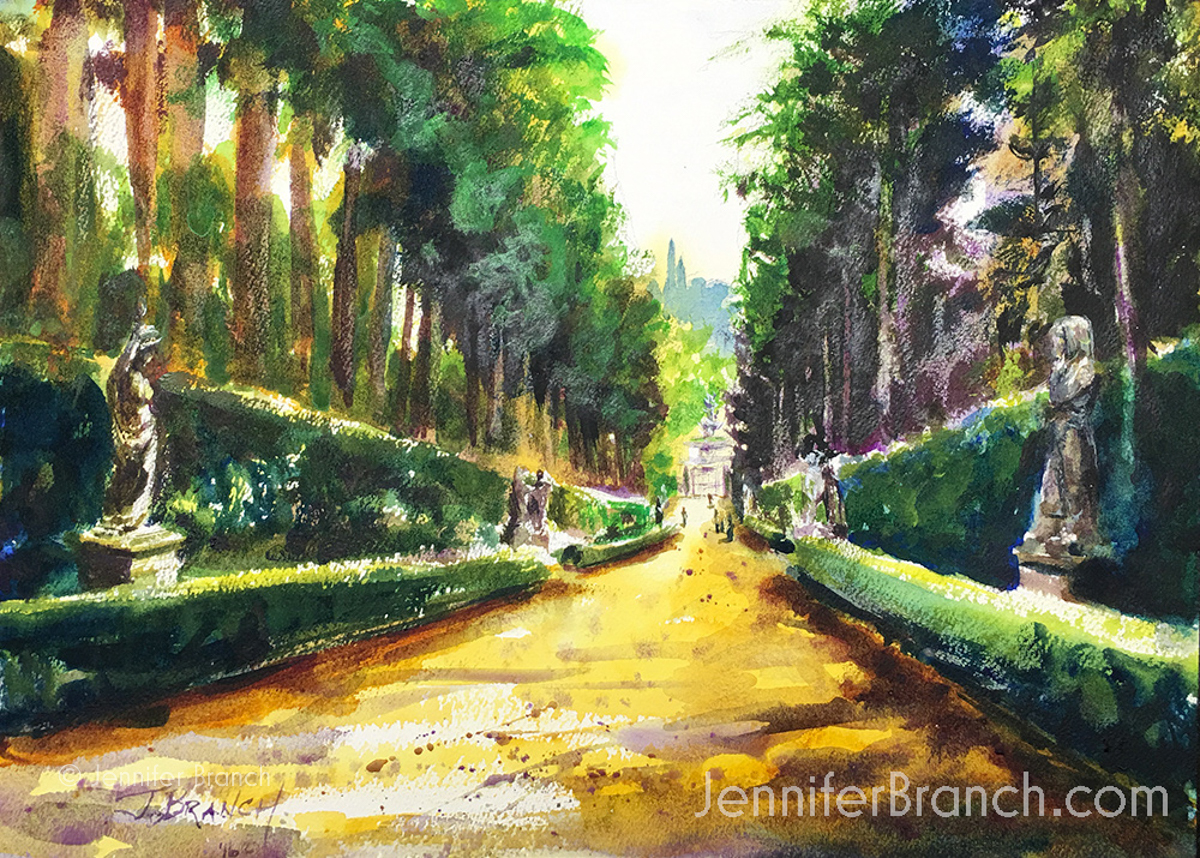
To purchase painting, please click!
I hope this helps improve your drawings dramatically. Since a good drawing is the foundation a painting rests on, your paintings will improve as your drawings improve.
You can see how this easily fits with triangulation, from the first How to Draw Lesson.
Most people will say that perspective only works with buildings and manmade objects perpendicular to the ground. However, you can use the principles of one point perspective to draw trees in a mountain range or grasses around a lake. Perpendicular helps, but really perspective works with objects of regular heights receding into the distance.
All you need to remember is things get smaller in a predictible pattern as they get further away.
Now that you know how simple one point perspective is, you can see how easy it is to add more points into the drawing.
The next drawing lesson will be on 2 Point Perspective. I'll show you how eye level changes perspective, how to find where the middle is of a receding object and a lot more detail!
Homework!
Find a single plane object with a long way to the horizon.
For example, a country road or long straight street without buildings, a long hallway, a railroad track.
If you've never tried perspective before, find something with one flat plane. That will be the easiest to start with.
Draw it first with charcoal on a sketchpad. If it looks good, draw it on watercolor and paint it!


